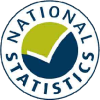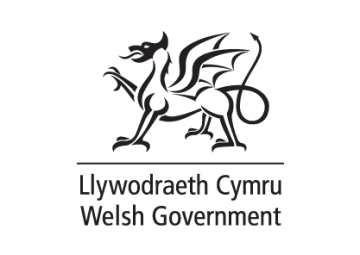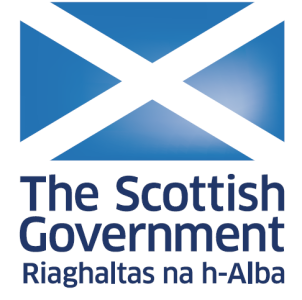Higher Education Student Statistics: UK, 2020/21 - Qualifications achieved
- Summary
- Student numbers and characteristics
- Where students come from and go to study
- Subjects studied
- Qualifications achieved
- Notes
How many HE qualifications were achieved?
The total number of qualifications achieved in 2020/21 was 872,765. This was an increase of 9% in the number of qualifications achieved in comparison to 2019/20. This increase can be attributed to the significant decrease in qualifications from 2018/19 to 2019/20. This decrease was due to a few providers who experienced administrative hold-ups related to the COVID-19 pandemic which began in the 2019/20 academic year. As such, qualifications that were not reported in the 2019/20 academic year were carried over to 2020/21. In 2020/21, 23,445 qualifications awarded in 2019/20 were reported, accounting for 3% of the 2020/21 total. This number has increased by 7,295 compared to 2019/20.
- First degree qualifications reported in 2020/21 increased by 25,465 compared with those reported in 2019/20. Most of this increase was among part-time first degree qualifications.
- Masters taught qualifications continue a year-on-year increasing trend, which aligns with the increased uptake of masters students following the introduction of postgraduate loans. However, qualifications awarded in postgraduate research have decreased each year from 2018/19.
- The number of masters taught qualifications increased by 68,150 between 2016/17 and 2020/21. Females accounted for 43,140 of this increase.
- Between 2019/20 and 2020/21, the proportion of qualifications awarded at postgraduate level to students who studied part-time decreased by 8 percentage points.
- In 2016/17, masters taught qualifications accounted for 22% of all qualifications awarded. By 2020/21 this increased to 27%.
A qualifier is a student who gained a qualification during the academic year in question. This is useful for restricting data to a cohort of graduates. See the qualifications obtained population definitions for more detail.
Figure 15 - HE qualifications obtained by level of qualification
Academic years 2016/17 to 2020/21
Show:
Overall, classification proportions for 2020/21 remain roughly in line with those in 2019/20. Due to the COVID-19 pandemic which began during the 2019/20 academic year, many providers issued public statements that a 'no detriment' approach would be adopted when it came to assessment. This typically ensured that students would be awarded a final grade no lower than the most recent provider assessment of their attainment. Circumstances in the 2020/21 academic year were somewhat different. Although many of the blanket ‘no detriment’ policies of the previous year were discontinued at the end of the 2019/20 academic year, many providers instituted modified mitigation policies designed to take into consideration the ongoing difficulties faced by students. The continuation of these mitigation policies, coupled with changes to assessment practices, is reflected in the degree classifications awarded in the 2020/21 academic year. More details on the impact of COVID-19 can be seen in the notes section of this release and in the insight brief.
Of those gaining a classified first degree:
- The share of students who received a lower second qualification classification fell by 5 percentage points from 19% in 2018/19 to 14% in 2020/21.
- In 2020/21 a larger proportion of female students gained a first class honours than males. There has been a consistent proportion of 46% of male students obtaining upper second class honours since 2017/18.
- In a continuing trend, full-time students had a larger proportion of first or upper second class honours than part-time students.
There were 20,230 students who qualified with an unclassified first degree in 2020/21. This mainly includes degrees that don't have a classification, such as medicine. These students are excluded from figure 16 but included in the total number of first degree qualifiers in figure 15.
Figure 16 - Percentage of first degree qualifiers obtaining each classification
Academic years 2016/17 to 2020/21
Figure 17 shows that in 2020/21:
- More qualifications were awarded in business and management than any other subject.
- Among the science subject group, more qualifications were awarded in subjects allied to medicine than any other subject.
- Of students receiving qualifications in subjects allied to medicine, 79% were female.
What if a student studies more than one subject?
Figures in subject tables are Full Person Equivalent (FPE). If a student on a course (an 'instance') studies more than one subject we apportion that instance between those subjects. For example, a student studying ⅔ Business studies and ⅓ French will be counted as 0.67 FPE in Business & administrative studies and 0.33 FPE in Languages.
Figure 17 - HE qualifications obtained by CAH level 1 subject and sex
Academic years 2019/20 to 2020/21
Reset filters | Reset sort | Download table (csv) | Download source data (csv) | Download source data 051 record only (csv) | About SB262 Figure 17
- From 2019/20 to 2020/21 there was a decrease in the proportion of qualifications in science subjects versus those in non-science subjects for students aged 25 and older who obtained first degree qualifications.
- Among qualifiers obtaining a first degree, 49% of males qualified in science subjects. For females, the proportion qualifying in science subjects was 40%.
Figure 18 - Percentage of HE student qualifications obtained in science subjects by personal characteristics
Academic years 2019/20 to 2020/21

Release date
25 January 2022, 9:30
Coverage
UK
Release frequency
Annual - view all releases (1998/99 onwards)
Themes
Children, education and skills
Issued by
HESA, 95 Promenade, Cheltenham, GL50 1HZ
Press enquiries
+44 (0) 1242 388 513 (option 6), [email protected]
Public enquiries
+44 (0) 1242 388 513 (option 2), [email protected]
Statistician
Luke Perrott
Pre-release access
View pre-release access list for this release





